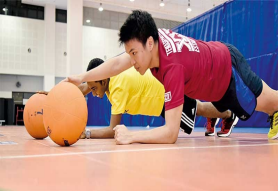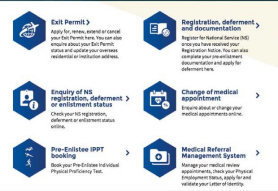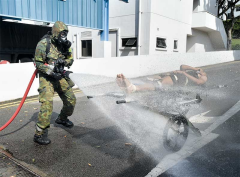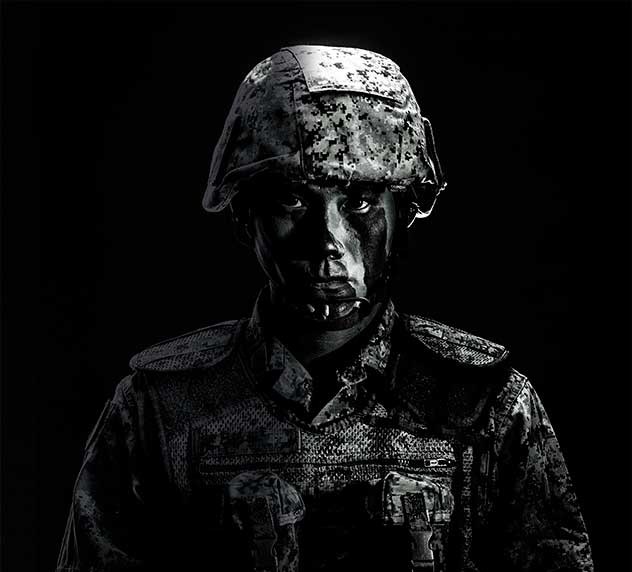With the recent changes to the Individual Physical Proficiency Test (IPPT), schools are trying various ways to get pre-enlistee students ready.
To help students prepare for National Service (NS), four schools in Singapore started pilot fitness training programmes last year.
These trials - conducted by the Institute of Technical Education (ITE) College East, ITE College West, Anderson Junior College (AJC) and Temasek Polytechnic (TP) - aimed to help weaker students do better in the National Physical Fitness Award (NAPFA) test.
Those who attain at least a Pass with Incentive in the modified NAPFA test* undergo the standard nine-week Basic Military Training (BMT). Otherwise, they have to enlist earlier and go through the extended 19-week BMT.
The pilot programmes came about from a proposal by the Advisory Council on Community Relations in Defence (ACCORD) to help pre-enlistee students improve their fitness before enlistment.
Physical Education (PE) teachers and staff first visited the Army Fitness Centre to understand the Singapore Armed Forces' fitness training and requirements. Thereafter, each school customised a training programme that best met the needs of their students.
Fast and effective
TP implemented a four-week pilot programme that aimed to boost students' fitness levels quickly. Held twice a week, each session lasted only 30 minutes.
"Youngsters nowadays are quite impatient. If we're not able to give them results in a short time, they will not be convinced (to continue training)," explained Dr Isaac Lim, TP's manager for sports science and education.
The polytechnic conducted five trial runs for 106 students. NAPFA tests were conducted before and after each trial to measure the programme's effectiveness.
The number of students who obtained Pass with Incentive rose from 18 percent to 44 percent. The students were pleasantly surprised at their rapid improvement. Final-year accounting and finance student Samuel Francis, 20, went from 29 points (Fail) to 63 points (Pass with Incentive).
He attributed the improvement to the high-intensity interval training and added: "It was fun training together. In the last three years, we didn't have PE lessons like in secondary school."
Although TP's pilot fitness programme lasts only 30 minutes per session, it has proven to be effective. In just four weeks, each student improved his average NAPFA score by 16 points.
Fun approach
For the ITEs, students already go through a two-hour compulsory sports and wellness class each week. During each session, 30 minutes are devoted to fitness training.
To help students get into shape faster, ITE College East and ITE College West offered an eight-week after-school pilot programme. Held twice a week, each session lasted up to one-and-a-half hours and consisted of circuit training, gym workouts and running.
The first trial involved 200 students. The large-group training allowed students to have fun and motivate one another.
The instructors also injected variety into the training. For example, instead of running six laps on the track continuously, students sprint for one lap, then two, and thereafter three laps.
"We try not to make it monotonous. That's how we engage the students," said Mr Lim Tong Hai, ITE College East's senior lecturer in PE.
The programme was such a hit that even female students requested to join in. In the first trial run, the number of students who attained Pass with Incentive rose from 38 percent to 45 percent. The second trial run, involving another 200 students, saw similar improvement from 42 percent to 49 percent.
Even those who were fit to begin with benefitted. Final-year electronics student Muhammad Hairil Anwar Bin Mohd Ridzuan, for example, improved his NAPFA result from Silver to Gold. Said the 18-year-old: "(I took part because) I wanted to challenge myself, train more and be ready for NS."
ITE College East and West's large-group training allows students to have fun and motivate each other during the session.
Taking ownership
Through the Enhanced Fitness Programme at AJC, students are taught to identify their weaknesses, set fitness goals and design their own training plans. To help them do so, PE teachers now spend more time during lessons to explain the principles behind the training.
As AJC's programme will only conclude this May, it is too early to tell if this new approach is effective, but Mr Arthur Lim, Head of AJC's PE Department, has observed that more students are receptive to keeping fit.
For example, first-year student Alven Lee, 18, used to loathe going to the gym. "I didn't know what to do and felt that I would never benefit from it... After my PE teacher taught me how to train, I am more willing to go to the gym (and train with my schoolmates) now."
TP, ITE College East and ITE College West completed their trial runs in December last year, and will continue to conduct the programmes to meet popular demand. ITE College Central has also joined the initiative.
Lieutenant Colonel Chia Geok Koon, Commanding Officer, Army Fitness Centre, welcomed the pilot fitness programmes conducted by the schools.
"Beyond the encouraging results of the pilot fitness programmes, it is heartening to note that many students were motivated to train more, and understood the importance of fitness, healthy living, and being prepared for NS."
*All students continue to take the six-station NAPFA test, but male students are tested on push-ups instead of chin-ups. Only the combined scores for push-ups, sit-ups and 2.4km run will be used for pre-enlistment. This is in line with the new three-station IPPT format.
"In the old days, we just gave instructions, and the students followed. Today, we want them to understand what they are doing, and take personal responsibility for their own fitness." Mr Lim, Head of AJC's PE Department






